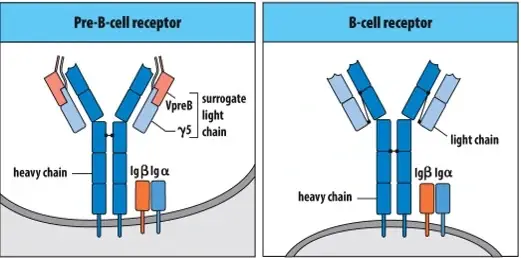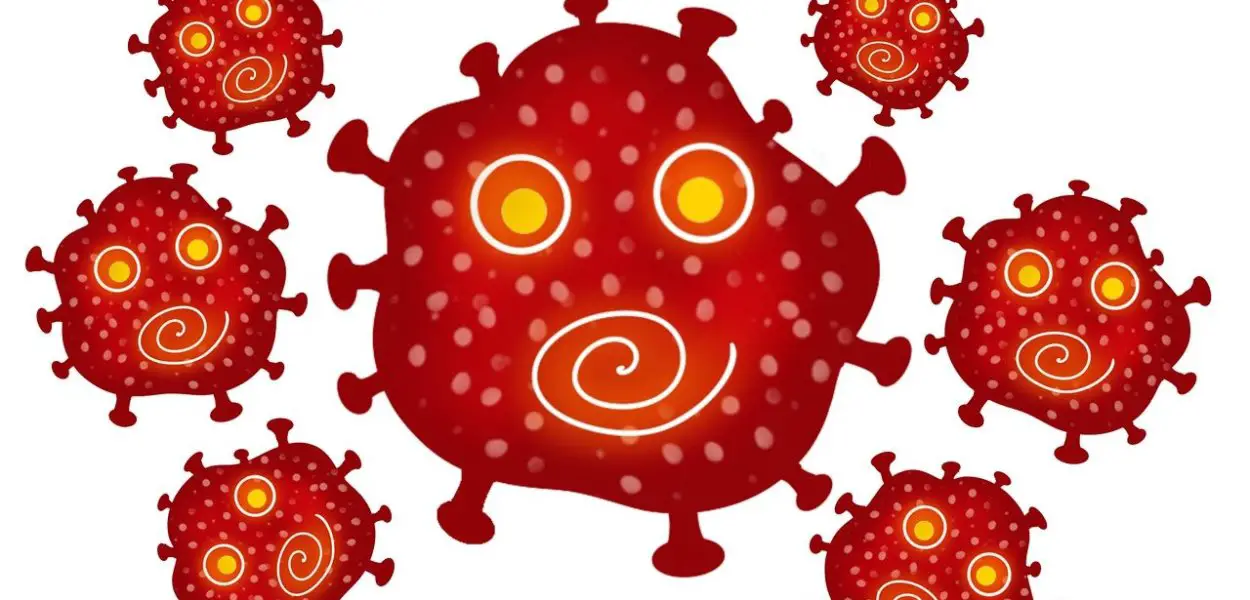Immunology 101: Stages of B-cell Development [Biology, MCAT, USMLE Medicine]
B-Cell Development Stages. stem cell –> early pro-B cell –> late pro-B cell –> large pre-B cell –> [1st checkpoint – selects for functional heavy chains] –> small pre-B cell –> [2nd checkpoint – select for functional light chains] –> Immature B cell (has surface IgM, no surface IgD). Somatic recombination is the process in which different individual gene segments of the H (heavy) chain combine with rearranged gene segments of the L (light) chain. The enzymes responsible for somatic recombination are the recombinase enzymes (RAG-1 and RAG-2) that recognize specific sequences (RSS) or recombination signal sequences. RAG-1 and RAG-2 are only expressed in B or T lymphocytes. These specific sequences recognized by the RAG-1 or RAG-2 enzymes are either a 1) heptamer or 2) nonamer. The heptamer literally contains 7 nucleotides, and the nonamer literally contains 9 nucleotides. There are typically 12 or 23 nucleotides in between the heptamer and nonamer to separate them.















